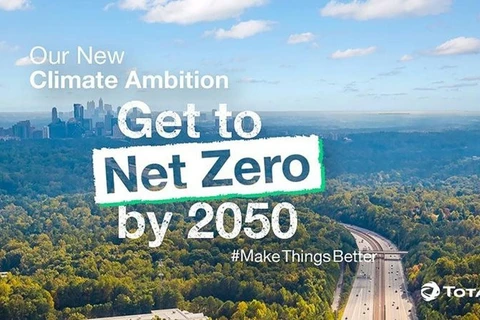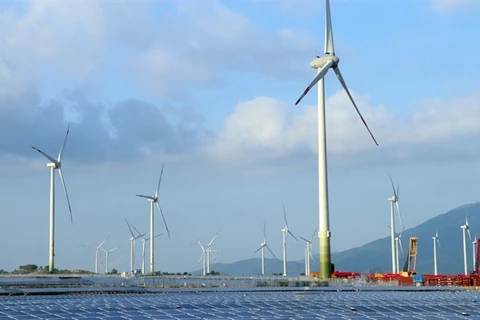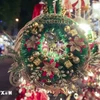Hanoi (VNA) –The establishment of a domestic carbon credit trading floor is expected to help improve the transparency and effectiveness of transactions related to carbon credits, thereby helping Vietnam work towards its net zero goal by 2050.
A representative from the Ministry of Natural Resources and Environment (MoNRE) said it is anticipated that in the future, Vietnam will have around 10.8 million voluntary carbon credits issued annually, along with corresponding demand for exchange and trading. Therefore, establishing a domestic carbon credit trade floor is a must. It is also a crucial strategy regarding the "green key" for Vietnam to achieve the net-zero emissions by 2050.
Over 1,910 firms required to undergo greenhouse gas inventory
To this end, the MoNRE is developing a domestic carbon market development project, which focuses on mandatory trading of greenhouse gas emission quotas from businesses and domestic carbon trading, aiming to connect with the international market.
The project aims to begin the pilot stage by 2025 and officially operate a carbon credit trading floor by 2028.
Tang The Cuong, Director General of the MoNRE’s Climate Change Department, said in order to realise the aforementioned roadmap, Vietnam needs meticulous preparations in terms of infrastructure, technology, inventory, and reporting capacity of businesses.
According to statistics, there are 1,912 businesses nationwide that are required to conduct greenhouse gas inventories and meet emission limits. Therefore, in the near future, the MoNRE will suggest the Prime Minister approve Vietnam's total emission limit, as well as allocation for establishments during the 2026-2030 period and on an annual basis.
Head of the advisory board for the development and operation of voluntary carbon credit trading floor Nguyen Hong Loan said there are four carbon credit mechanisms, including the clean development mechanism (CDM), joint crediting mechanism (JCM), gold standard (GS), and verified carbon standard (VCS).
The total volume of carbon-related credits issued in Vietnam as of December 2022 amounted to over 40 million. Additionally, around 50 carbon credit projects under the mechanism of the Global Carbon Council (GCC) have been submitted. Among these, the CDM and the JCM are managed by Government agencies.
Clear short-term goals needed
Deputy General Director of Standard Chartered Nguyen Thuy Hanh said the lender will offer sustainable development products and services while providing free consultancy to all businesses when they make new investments or have business plans aimed at emissions reduction.
Following the trend of achieving the net zero goal, the demand for voluntary carbon credits worldwide has been increasing recently, and Vietnam is also not exempt from this trend. Most of the carbon credit projects in Vietnam are carried out through pre-purchase contracts, meaning that the party in need will place orders.
With experience in building and operating a carbon credit trading floor in Singapore, CEO of Climate Impact X Mark Glossoti said Vietnam needs to set clear short-, medium-, and long-term objectives which might change with the market, but initial steps still need to be taken.
During the fourth meeting of the National Steering Committee for the delivery of Vietnam's commitments at the 26th United Nations Climate Change Conference (COP26) held on July 14, Prime Minister Pham Minh Chinh asked the MoNRE to draft and submit a decree on carbon credit management of the Government in the second quarter of 2024 for consideration.
The MoNRE was also tasked with partnering the Ministry of Agriculture and Rural Development and relevant agencies to consult the experience of other countries. They could then advise the PM to issue directives on forest carbon credit management in Vietnam, ensuring the implementation of the nationally determined contributions and the commitment to achieving net zero emissions by 2050./.


























